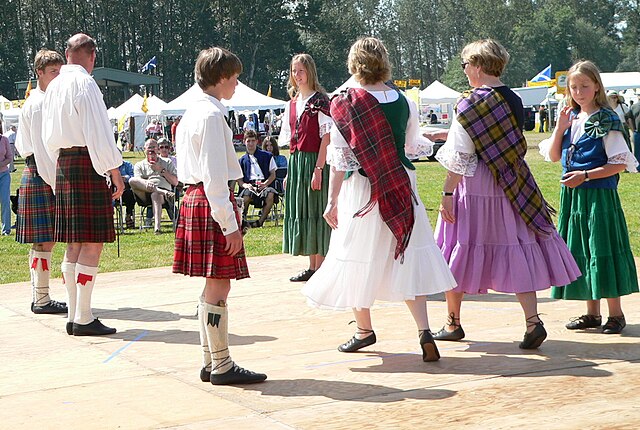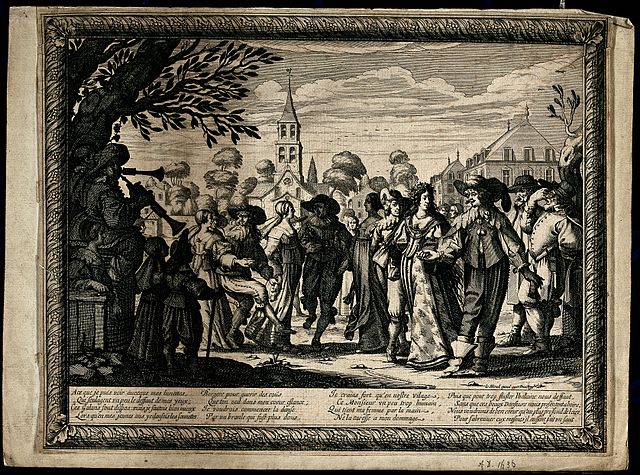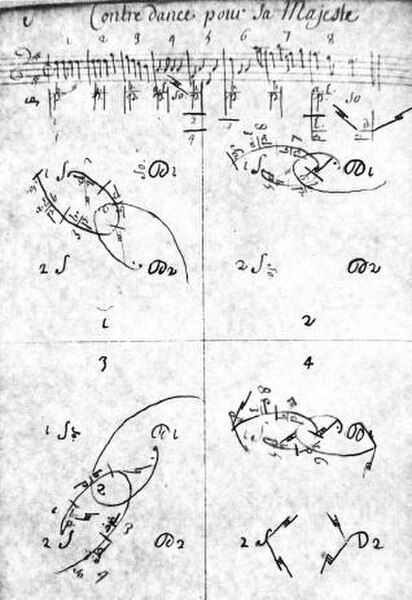Scottish country dance (SCD) is the distinctively Scottish form of country dance, itself a form of social dance involving groups of couples of dancers tracing progressive patterns. A dance consists of a sequence of figures. These dances are set to musical forms which come from the Gaelic tradition of Highland Scotland, as do the steps used in performing the dances. Traditionally a figure corresponds to an eight-bar phrase of music.
Scottish country dancing at the 2005 Skagit Valley Highland Games in Mount Vernon, Washington, US.
A country dance is any of a very large number of social dances of a type that originated in the British Isles; it is the repeated execution of a predefined sequence of figures, carefully designed to fit a fixed length of music, performed by a group of people, usually in couples, in one or more sets. The figures involve interaction with your partner and/or with other dancers, usually with a progression so that you dance with everyone in your set. It is common in modern times to have a "caller" who teaches the dance and then calls the figures as you dance. Country dances are done in many different styles.
Comical 18th-century country dance; engraving by Hogarth
Village country dance; engraving by Abraham Bosse, 1633
Lorin's contradanse choreography, one of the earliest western dance notations
The "La Trénis" figure of the Contredanse, an illustration from Le Bon Genre, Paris, 1805





